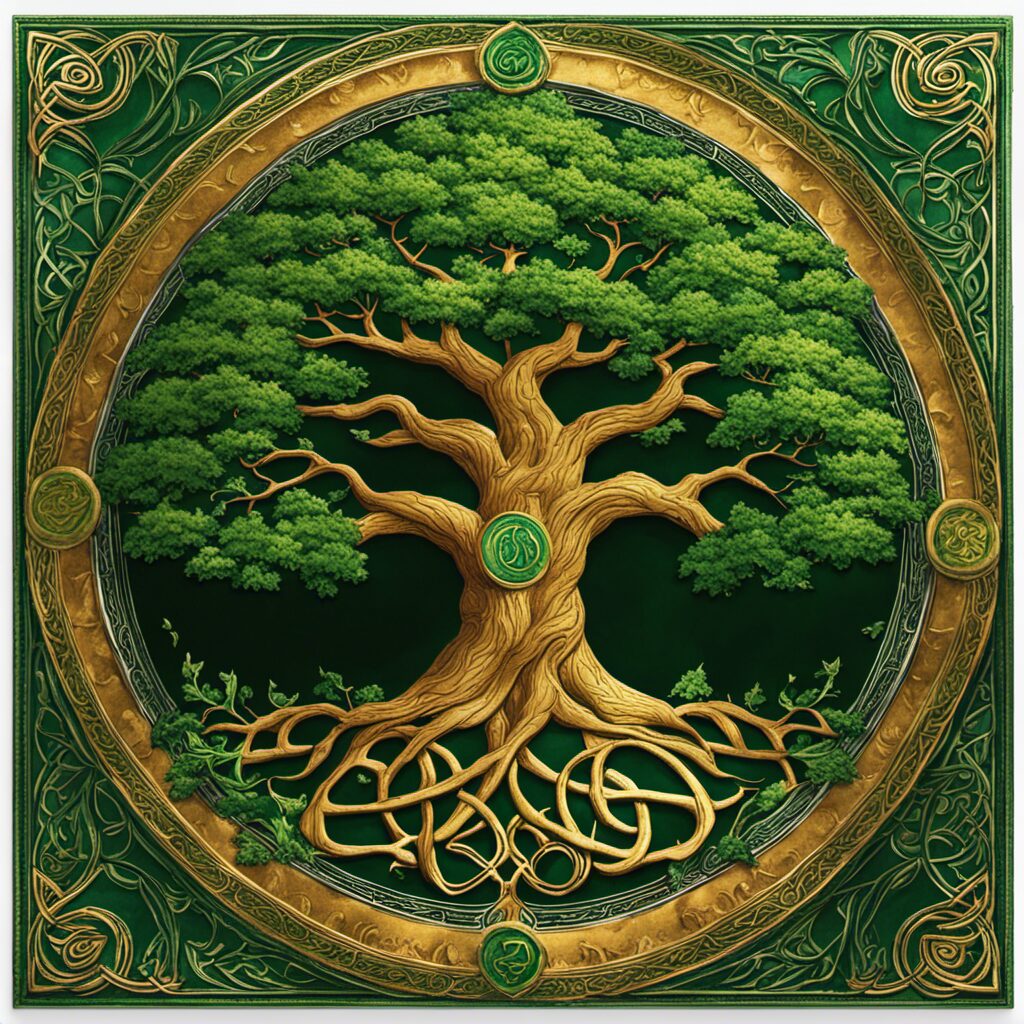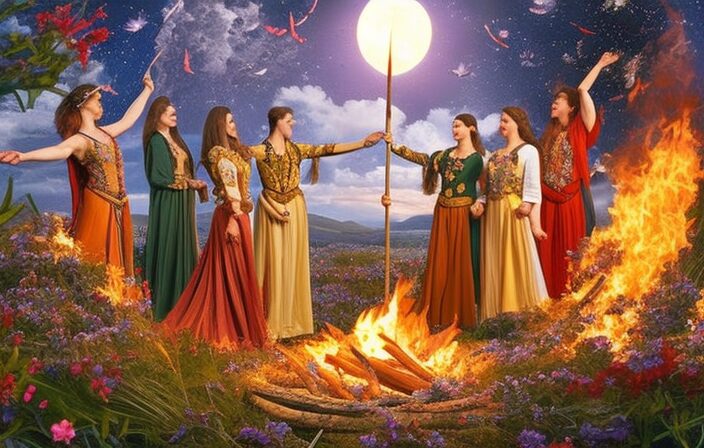The enigmatic origins of the Celtic calendar have long fascinated scholars and historians. Its ancient roots can be traced back to prehistoric times, and its development over the centuries remains a subject of ongoing investigation.
By unraveling the secrets of Celtic timekeeping, researchers hope to shed light on the significance of the festivals and seasons that were observed by this ancient civilization. Furthermore, decoding the symbols and symbolism embedded within this unique calendar system promises to provide valuable insights into Celtic culture and belief systems.
Key Takeaways
- The Celtic calendar has its origins in prehistoric times and is deeply connected to nature and the seasons.
- It was influenced by astronomical observations and aligned with celestial events, incorporating both lunar and solar elements.
- The calendar played a significant role in religious and social events, with festivals marking important moments in the agricultural cycle.
- The symbols and symbolism of the Celtic calendar hold deep mythological meanings and continue to inspire art and literature.
The Ancient Roots of the Celtic Calendar
The origins of the Celtic calendar can be traced back to ancient times, indicating its deep historical roots. The early Celts were deeply connected with nature and the cycles of the seasons, which heavily influenced their calendar system. Ancient astronomical influences played a significant role in shaping the structure of the Celtic calendar. The movements of celestial bodies such as the sun, moon, and stars were observed and studied by early Celtic societies. They used this knowledge to develop a calendar that aligned with these celestial events.
The cultural significance of the Celtic calendar in early Celtic societies cannot be underestimated. It served not only as a practical tool for organizing time but also held great spiritual and religious importance. The cycle of seasons represented by their calendar was closely tied to agriculture and farming, which formed the backbone of their society. Additionally, festivals and rituals were often held at specific points in the calendar year that marked important agricultural or celestial events.
Overall, the ancient roots of the Celtic calendar highlight its close connection to nature and its central role in early Celtic societies. By incorporating astronomical influences and reflecting cultural practices, this unique calendrical system provided a framework for both practical timekeeping and spiritual beliefs within these ancient communities.
Tracing the Development of the Celtic Calendar
Tracing the development of this ancient timekeeping system involves examining its evolution and progression over time. The Celtic calendar, known for its intricate and mystical nature, has a rich history that spans centuries. Scholars have studied various sources to piece together the puzzle of how this calendar came into existence and evolved over time.
-
Ancient Observations: The Celtic people were deeply connected to nature and used astronomical observations to track the changing seasons. They relied on celestial events like solstices and equinoxes to mark important agricultural milestones.
-
Lunar Influence: The lunar cycle played a significant role in Celtic timekeeping. The phases of the moon guided their religious rituals, agricultural activities, and even social gatherings.
-
Solar Alignment: As the Celtic civilization advanced, they began incorporating solar alignments into their calendar system. Sacred sites like Stonehenge were built with precise alignments to capture the movement of the sun throughout the year.
-
Christian Adaptation: With the advent of Christianity, elements from both traditions merged in some regions. Christian festivals were incorporated into the existing Celtic calendar structure, resulting in a unique blend of cultural practices.
Through diligent research and analysis of archaeological evidence, linguistic studies, and historical accounts, scholars continue to uncover new insights into the development of Celtic timekeeping systems. These findings shed light on ancient customs while also providing a glimpse into our shared human past.
Unraveling the Secrets of Celtic Timekeeping
Unraveling the secrets of Celtic timekeeping involves a meticulous examination of archaeological findings, linguistic analysis, and historical records to gain deeper insights into the intricacies of this ancient system. The study of Celtic timekeeping techniques is an important endeavor as it provides valuable information about the mystery behind ancient Celtic calendars.
Archaeological evidence suggests that the Celts had a sophisticated understanding of celestial movements and their impact on time measurement. Stone structures such as stone circles and megalithic monuments have been found throughout Celtic territories, indicating a strong connection between these structures and celestial observations. Linguistic analysis further supports the idea that the Celts had specific terms for different aspects of time, including lunar months and solar years.
Historical records also shed light on Celtic timekeeping practices. The Roman writer Julius Caesar mentioned in his works about the Gauls’ use of a calendar based on lunar cycles. Other accounts describe how Druids played a crucial role in maintaining and interpreting these calendars.
However, despite these sources, many aspects of Celtic timekeeping remain shrouded in mystery. The exact methods used by the Celts to track time are still not fully understood. Deciphering their complex calendar systems requires interdisciplinary research involving archaeology, linguistics, astronomy, and history.
Exploring the Significance of Celtic Festivals and Seasons
Exploring the significance of Celtic festivals and seasons involves an examination of cultural practices, mythological narratives, and seasonal changes to gain a deeper understanding of the role these events played in ancient Celtic society. The Celtic festival traditions were closely intertwined with the importance of agricultural seasons, reflecting the agrarian nature of their society.
1) Samhain: Samhain was one of the most important Celtic festivals, marking the end of the harvest season and the beginning of winter. It was believed that during this time, the boundary between the physical world and the spiritual realm was blurred.
2) Imbolc: Imbolc celebrated the emerging spring and marked an important time for purification rituals. It symbolized new beginnings and fertility.
3) Beltane: Beltane celebrated the arrival of summer and was associated with fire rituals, as well as fertility rites. This festival highlighted renewal, growth, and abundance.
4) Lughnasadh: Lughnasadh marked the beginning of autumn when crops were harvested. It honored Lugh, a prominent god in Celtic mythology associated with skills such as agriculture and craftsmanship.
These festivals not only served as religious events but also facilitated social gatherings where communities would come together to celebrate their shared heritage. Through these celebrations, ancient Celts sought to maintain harmony with nature while acknowledging its power over their lives through cycles of growth and change dictated by agricultural seasons.
Decoding the Symbols and Symbols of the Celtic Calendar
The symbols and symbolism associated with the Celtic calendar have been a subject of scholarly analysis and interpretation in order to understand their cultural significance. Interpreting the meaning of ancient Celtic symbols in the calendar is crucial for unraveling the complex system of timekeeping used by the ancient Celts. The symbols found in the calendar are often representations of celestial bodies and natural phenomena, reflecting the close connection between the Celts and their environment.
Analyzing the influence of celestial bodies on the Celtic calendar reveals that they played a central role in determining important dates and events. The movements of celestial bodies, such as the sun, moon, stars, and planets, were observed and incorporated into the structure of the calendar. For example, certain alignments or positions of these celestial bodies may have marked specific festivals or agricultural activities.
Furthermore, many symbols within the Celtic calendar also hold deep mythological meanings. These symbols can be seen as representations of deities or supernatural beings associated with different aspects of life such as fertility, harvests, or protection. By studying these symbols within their cultural context, scholars can gain insights into how these ancient beliefs shaped societal practices and rituals.
Conclusion
In the realm of ancient timekeeping, the Celtic calendar stands as a testament to the rich and enigmatic history of this ancient civilization. Delving into its origins reveals a complex tapestry woven with intricate symbolism and profound significance.
Through meticulous research, scholars have uncovered the hidden depths of this celestial chronology, shedding light on the mysteries that lie within. The festivals and seasons inscribed upon its pages offer glimpses into the spiritual beliefs and cultural practices of the Celts. With each symbol and emblem carefully deciphered, we unlock a portal to understanding their world.
The Celtic calendar is not merely an archaic artifact; it is an extraordinary vessel that carries us through time, connecting us to our ancestors in ways unimaginable. Its study offers both scholarly pursuit and personal exploration, inviting us on a journey that unravels the very fabric of our shared human history.




